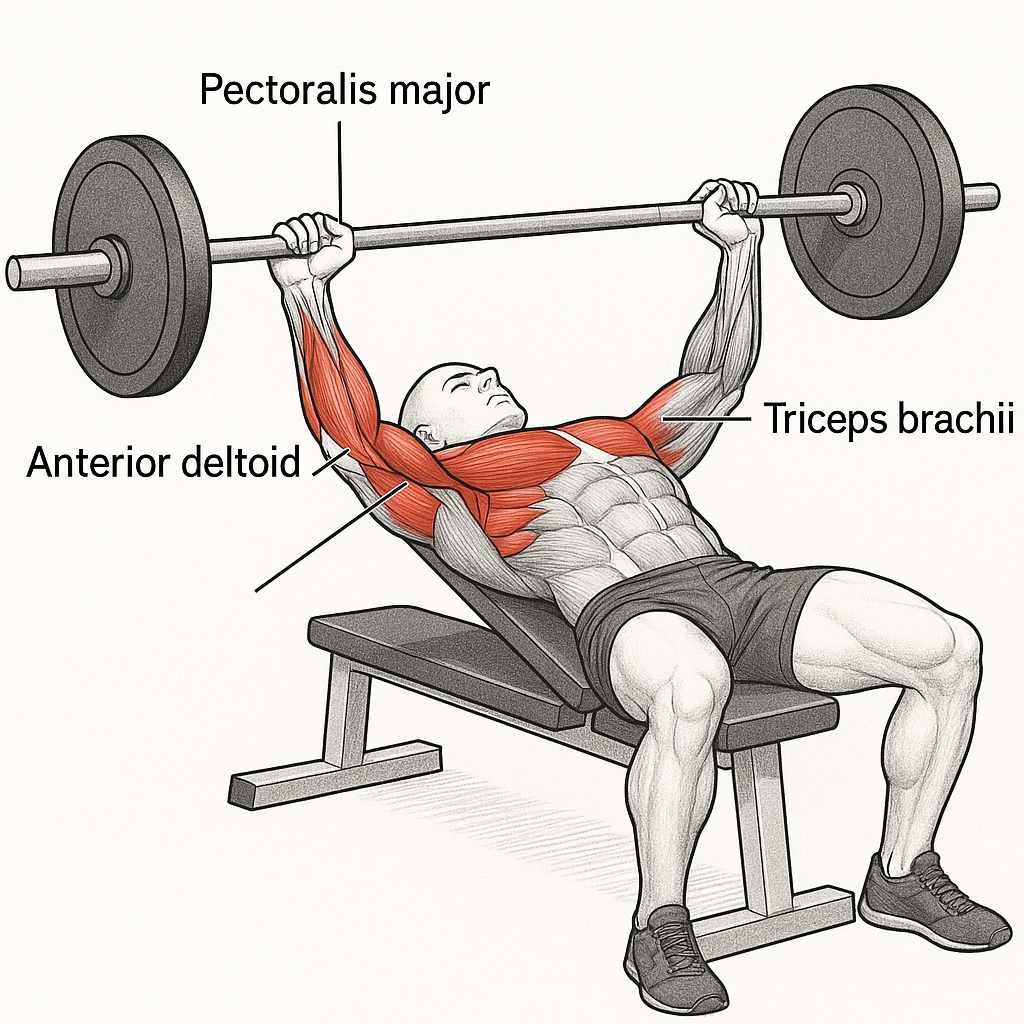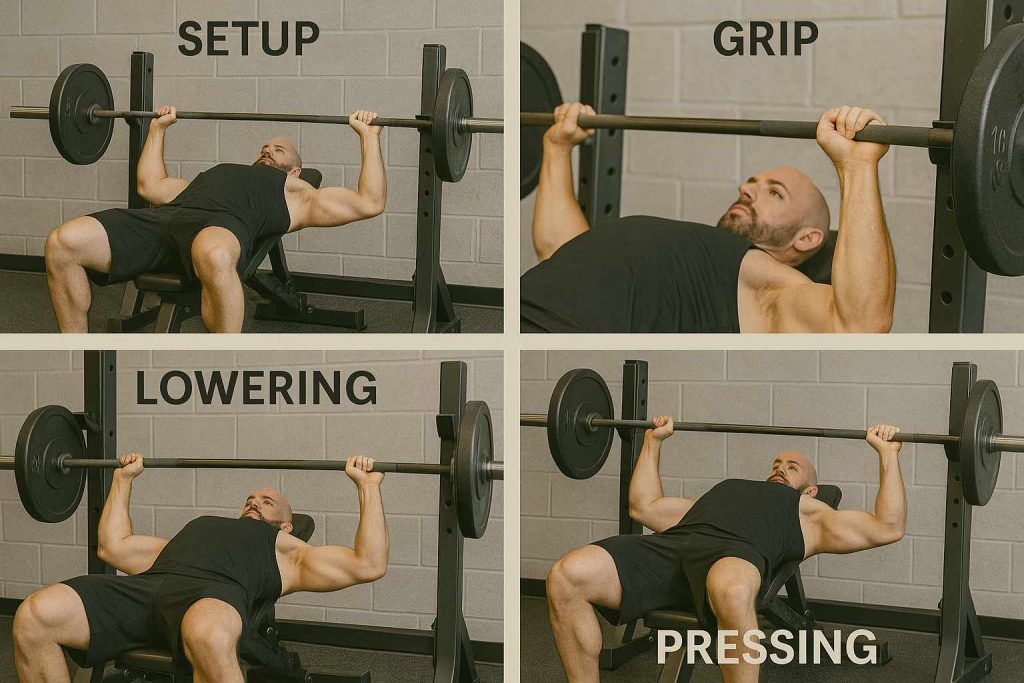The wide grip bench press is one of the best ways to maximize chest activation and build upper body strength. By widening your grip on the barbell, you increase the emphasis on your pectoral muscles and can often lift heavier weights compared to a standard grip. If your goal is chest growth or improving your one-rep max, the wide grip bench press is an excellent option.
Understanding the wide grip bench press is important for anyone serious about upper body training, whether you’re bodybuilding, powerlifting, or just looking to upgrade your workout. This definitive guide covers everything you need to know: the muscles worked, correct form, real benefits (and risks), and how it stacks up against other bench press variations. We’ll also include the latest research and expert opinions, so you get the facts—not the hype. For official guidance, always refer to the National Strength and Conditioning Association and check your gym’s safety rules.

What Is the Wide Grip Bench Press?
The wide grip bench press is a barbell bench press performed with your hands 1.5 to 2 times shoulder width apart. This wider grip shortens the range of motion, shifts more work to your chest, and allows many lifters to press heavier weights. Unlike the standard grip (just outside shoulder width), the wide grip bench press targets the outer chest fibers for enhanced muscle growth.
- Hands placed 1.5–2× shoulder width apart
- Shorter bar path than standard grip
- Greater emphasis on the chest, less on triceps
For visual reference and official instructions, see BarBend’s Bench Press Guide.
Muscles Worked by Wide Grip Bench Press

Main Muscles Targeted:
- Pectoralis Major (Chest) – especially outer and upper fibers
- Anterior Deltoids (Front Shoulders)
- Triceps Brachii (Back of Arms) – less than in close/standard grip
Stabilizers:
- Serratus Anterior
- Rotator Cuff Muscles
- Upper Back
Research from 2024 shows that using a wide grip (about 2× shoulder width) significantly increases chest muscle activation while reducing triceps involvement compared to a standard or close grip.
| Muscle Group | Wide Grip Activation | Standard Grip Activation |
|---|---|---|
| Chest (Pecs) | High | Moderate |
| Front Shoulders | High | Moderate |
| Triceps | Lower | High |
How to Do Wide Grip Bench Press (Step-by-Step)

- Lie flat on a bench, feet planted and back slightly arched.
- Grip the barbell so your hands are 1.5–2 times your shoulder width.
- Retract your shoulder blades (pull them down and back).
- Unrack the bar, lower it slowly to your chest (mid-sternum).
- Press the bar up while keeping elbows at about 70–80° from your body.
- Lock out at the top, but do not overextend your elbows.
- Repeat for the desired number of reps, always using a spotter for safety.
Tips:
- Keep your wrists straight and elbows under the bar.
- Don’t bounce the bar off your chest—control each rep.
- Use a full range of motion but avoid shoulder pain.
Check out this video demonstration:
For more form details, refer to Steel Supplements’ Wide Grip Bench Press Guide.
Benefits of Wide Grip Bench Press
- Maximal Chest Activation: Scientific EMG studies show that the wide grip bench press doubles pectoral muscle activation compared to narrower grips, making it a top choice for chest hypertrophy (Barbell Rehab, 2024).
- Shorter Bar Path = Heavier Lifts: A wide grip reduces the distance the bar travels, letting you push more weight—a major advantage for powerlifters and strength athletes (Powerlifting Technique, 2024).
- Stronger Shoulders & Upper Body: With proper form, you’ll develop powerful anterior deltoids and supporting stabilizers, building well-rounded upper body strength.
- Break Through Plateaus: Changing grip can help overcome sticking points in your bench press and stimulate new muscle growth.
- Versatility: Wide grip benching is useful for bodybuilders, powerlifters, and anyone seeking a chest-dominant pressing movement.
Drawbacks and Risks
- Increased Shoulder Stress: Wider grip increases shoulder rotation, which may cause discomfort if you have poor shoulder mobility or past injuries (Hevy App, 2024).
- Less Triceps Involvement: Not ideal if your goal is triceps strength or mass.
- Risk of Poor Form: Beginners often flare elbows too wide, raising injury risk. Proper technique is essential.
Safety Tip: Always warm up your shoulders, and avoid wide grip if you have a history of shoulder pain. Consult with a certified trainer if unsure.
Wide vs Standard vs Close Grip Bench Press
| Grip Type | Main Focus | Chest Activation | Triceps Activation | Range of Motion |
|---|---|---|---|---|
| Wide | Chest | Highest | Lowest | Shortest |
| Standard | Balanced | Moderate | Moderate | Medium |
| Close | Triceps/Delts | Lowest | Highest | Longest |
Choose wide grip if:
- Your main goal is chest growth.
- You want to increase your bench press 1RM.
Choose standard/close grip if:
- You want more balanced or triceps-dominant development.
- You have shoulder mobility issues.
For official technique advice, see the NSCA Bench Press Guidelines.
FAQs About Wide Grip Bench Press
Q: How wide should my grip be?
A: Generally 1.5 to 2 times shoulder width. Too wide increases shoulder risk—test what feels strong and safe.
Q: Is wide grip better for muscle growth?
A: Yes, for the chest. EMG studies consistently show superior pec activation.
Q: Does it increase injury risk?
A: Not if performed with proper warm-up, technique, and within your flexibility limits.
Q: Can beginners do wide grip?
A: Beginners should start with standard grip, perfect form, then gradually try wider hand placement.
Conclusion
The wide grip bench press is “better” for building a bigger, stronger chest—but only if you use correct form and have the shoulder mobility to perform it safely. It’s a powerful tool for muscle growth, boosting your bench press max, and breaking through plateaus.
If you want to grow your chest and push more weight, give the wide grip bench press a try. Start light, focus on form, and see how it transforms your upper body strength!
